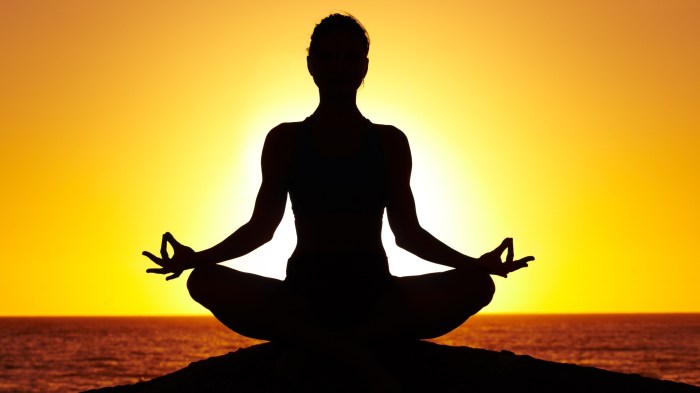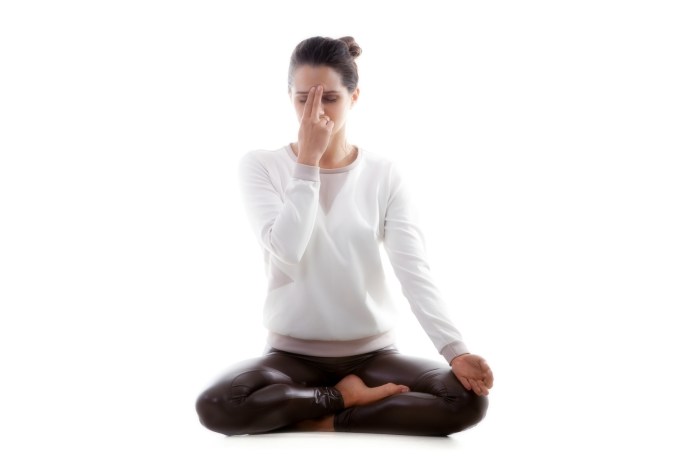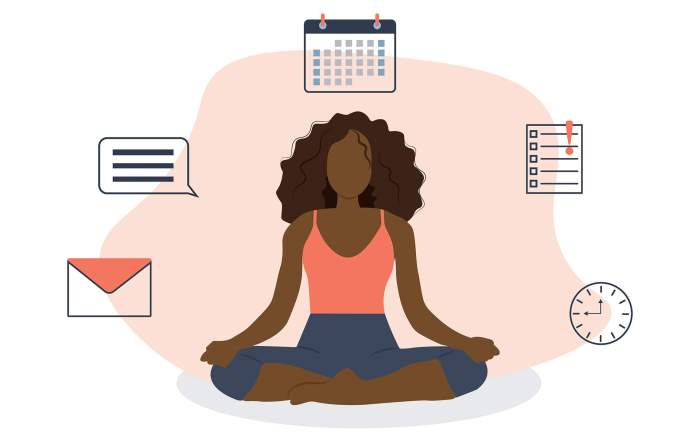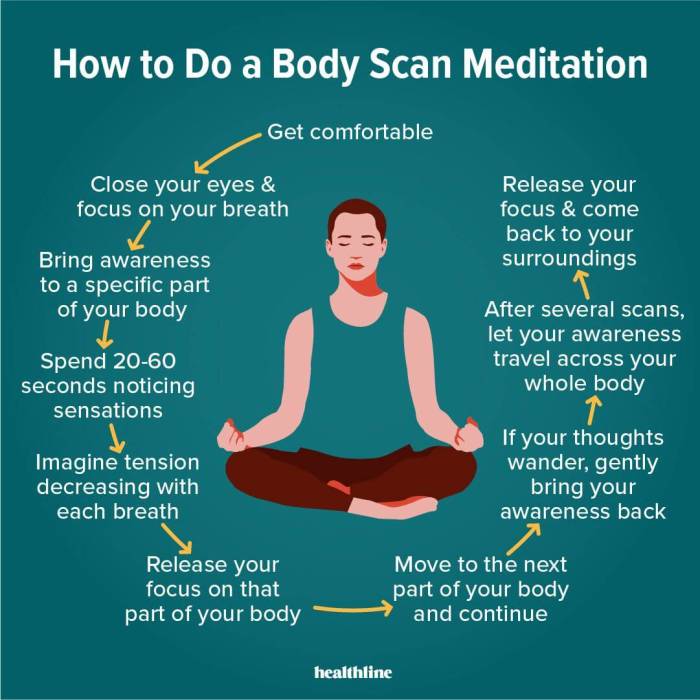Embark on a journey to inner peace and holistic wellness with meditation exercises. Discover the art of mindfulness and its profound impact on your physical, mental, and emotional health.
Explore different meditation techniques and learn how to seamlessly incorporate them into your daily routine for a more balanced and fulfilling life.
Benefits of Meditation Exercises

Source: getwallpapers.com
Meditation exercises offer a wide range of benefits for both the body and mind, making it a valuable practice to incorporate into your daily routine.
Physical Benefits
- Improves overall physical health by reducing blood pressure and enhancing the immune system.
- Increases energy levels and promotes better sleep patterns.
- Enhances focus and concentration, leading to increased productivity and efficiency.
Mental Health Benefits
- Reduces symptoms of anxiety and depression, promoting a sense of calm and well-being.
- Helps manage stress and promotes emotional stability in challenging situations.
- Boosts cognitive function and memory retention, improving overall mental clarity.
Emotional Well-being and Stress Reduction
- Enhances self-awareness and emotional intelligence, leading to better self-regulation and interpersonal relationships.
- Promotes a sense of inner peace and contentment, reducing feelings of anger and frustration.
- Encourages a positive outlook on life and helps cultivate a resilient mindset in the face of adversity.
Types of Meditation Exercises

Source: zenfulspirit.com
There are several types of meditation exercises that can help individuals achieve relaxation, mindfulness, and inner peace. Each type focuses on different techniques and approaches to reach a state of calm and clarity.
Mindfulness Meditation
Mindfulness meditation involves focusing on the present moment without judgment. Practitioners are encouraged to observe their thoughts, feelings, and sensations without getting caught up in them. The goal is to cultivate awareness and acceptance of the present moment.
- Techniques: Focus on breathing, body sensations, or external sounds. Acknowledge distractions without engaging with them.
- Purpose: Increase self-awareness, reduce stress, improve focus and concentration.
- Benefits: Better emotional regulation, enhanced cognitive abilities, increased compassion and empathy.
Loving-Kindness Meditation
Loving-kindness meditation involves cultivating feelings of love, compassion, and kindness towards oneself and others. Practitioners repeat phrases of well-wishes and visualize sending positive energy to different individuals or groups.
- Techniques: Recite phrases like “May I be happy, may you be peaceful” while focusing on feelings of warmth and love.
- Purpose: Foster feelings of connection, reduce negative emotions like anger and resentment.
- Benefits: Improved relationships, enhanced feelings of empathy and compassion, increased overall well-being.
Body Scan Meditation
Body scan meditation involves systematically focusing on different parts of the body, starting from the toes and moving up to the head. Practitioners pay attention to sensations, tension, and relaxation in each body part.
- Techniques: Bring awareness to each body part, notice any sensations without judgment, release tension through deep breathing.
- Purpose: Increase body awareness, promote relaxation, reduce physical tension and stress.
- Benefits: Improved mind-body connection, better sleep quality, reduced muscle tension and pain.
How to Practice Meditation Exercises

Source: mindful.org
Starting a meditation practice can be a rewarding journey towards inner peace and mindfulness. Here is a step-by-step guide for beginners to begin their meditation practice:
Creating a Conducive Environment
- Find a quiet and comfortable space where you can sit or lie down without distractions.
- Dim the lights or use candles to create a calming atmosphere.
- Use cushions or a meditation mat to support your posture and make yourself comfortable.
- Consider playing soft music or nature sounds to enhance relaxation.
Common Challenges and How to Overcome Them
- Difficulty focusing: Start with short meditation sessions and gradually increase the duration as you build your focus.
- Restlessness: Practice deep breathing techniques to calm the mind and body before starting the meditation.
- Intrusive thoughts: Acknowledge the thoughts without judgment and gently bring your focus back to your breath or a mantra.
- Physical discomfort: Adjust your posture or try different meditation positions to find what works best for you.
Incorporating Meditation Exercises into Daily Life

Source: sanjeevdatta.com
Integrating meditation exercises into your daily routine can have a profound impact on your overall well-being, even with a busy schedule. Here are some creative ways to make it a part of your daily life.
Morning Meditation Routine
Start your day with a short meditation session before you get out of bed. Focus on your breath and set positive intentions for the day ahead.
Mindful Commuting
Use your daily commute as an opportunity for mindfulness. Instead of listening to music or the news, try practicing deep breathing or a body scan meditation while traveling.
Lunchtime Meditation Break
Take a few minutes during your lunch break to step away from your desk and practice a quick meditation exercise. This can help you reset and recharge for the rest of the day.
Evening Wind-down
End your day with a calming meditation to relax your mind and body before going to bed. This can help improve the quality of your sleep and promote a sense of peace.
Impact on Overall Well-being
Consistent meditation practice has been shown to reduce stress, improve focus, enhance emotional well-being, and boost overall mental health. By incorporating meditation exercises into your daily life, you can experience these benefits firsthand.
Success Stories
Many individuals have shared their success stories after making meditation a daily habit. From increased productivity at work to better relationships and a greater sense of inner peace, the positive impact of regular meditation practice is evident in their lives.
Concluding Remarks

Source: calmsage.com
As we conclude our exploration of meditation exercises, remember that the path to well-being is just a breath away. Embrace the transformative power of mindfulness and unlock a world of serenity and self-discovery.